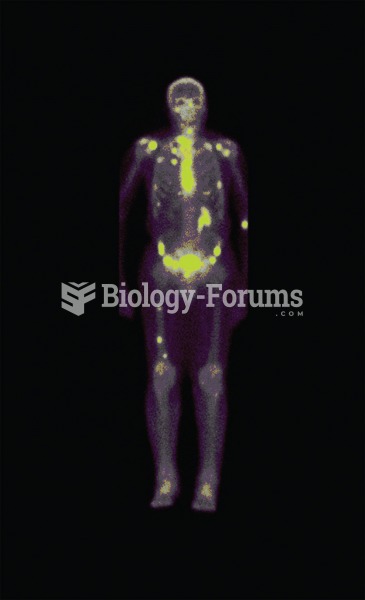|
|
|
Did you know?
Approximately 70% of expectant mothers report experiencing some symptoms of morning sickness during the first trimester of pregnancy.
Did you know?
On average, the stomach produces 2 L of hydrochloric acid per day.
Did you know?
The tallest man ever known was Robert Wadlow, an American, who reached the height of 8 feet 11 inches. He died at age 26 years from an infection caused by the immense weight of his body (491 pounds) and the stress on his leg bones and muscles.
Did you know?
The average adult has about 21 square feet of skin.
Did you know?
Drying your hands with a paper towel will reduce the bacterial count on your hands by 45–60%.







